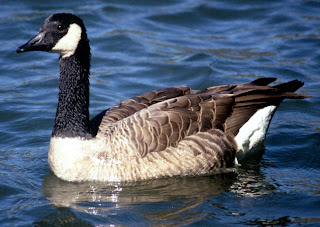
How many Christmas cards have you received showing bright red cardinals standing out against a snowy background or black-capped chickadees perched on a snow covered pine branch? It seems these two species of birds have cornered the market as the epitome of Christmas birds. But we don't have cardinals and black-capped chickadees on the Central Coast. So what bird can qualify to take prominence on our Christmas cards? I nominate the white-breasted nuthatch.
All nuthatches have something in common with spiders and flies – they can walk upside down and they are popularly known as the "upside-down" bird.
On the Central Coast more than one kind of nuthatch resides. Along with the white-breasted is the red-breasted and pygmy nuthatch. Each of them can be found in wooded areas where oaks and conifers grow. Parks and urban woodlands are also good places to look for them.
Of the three only the white-breasted is a true year-round resident. The red-breasted are often abundant in winter months but can be totally absent in some years. Pygmy nuthatches, as indicated by their name, the smallest of the three, are common only in the Cambria woodlands and are rare anywhere else in the county.
So how do these birds defy gravity on the trunks and branches of the trees? They have strong toes and use their claws to grip the bark and venture up and down tree trunks and large limbs, often even hanging upside down on the underside of a branch. Birds such as woodpeckers use their tails to help balance and prop them up on the sides of trees but the nuthatch has a short tail which doesn't come into play in their foraging techniques.
The white-breasted and other nuthatches feed mostly on insects that are hidden in the crevices of tree bark. This ability to walk down a tree makes it easy for the birds to spot their prey.
During winter months when insects are not available the birds change their diet and consume mostly seeds. Their habit of stuffing a seed or nut into a crevice in tree bark and then hacking or "hatching" away at it is what gained them the name nuthatch.
White-breasted nuthatches may mate for life. Their courtship display consists of the male spreading his tail, drooping his wings and swaying back and forth, bowing deeply. The female builds the nest in a tree cavity sometimes utilizing old woodpecker holes. They often use a crushed insect to sweep the inside and outside of the nest site. It's thought that the chemical secretions in the insect might deter predators.
Five to nine eggs are laid and while the female incubates them, the male brings food to her and feeds her. The nestlings are fed by both parents and generally fledge no later than 26 days from hatching.
While there are subtle differences in the plumage of the three western nuthatches, their most distinguishing feature may be their different vocalizations. Calls can vary regionally even among the same species. Pacific white-breasted nuthatches call with soft, slow nasal notes that sound like "whi-whi" or "wahwahwah" and can end on a high but descending note. Interior birds also have a nasal tone but call in a rapid series of notes "yidi-yidi-yidi."
So this Christmas season if you take a walk on a chilly morning through our local wooded areas keep an eye out for our very own Christmas bird, the white-breasted nuthatch.
